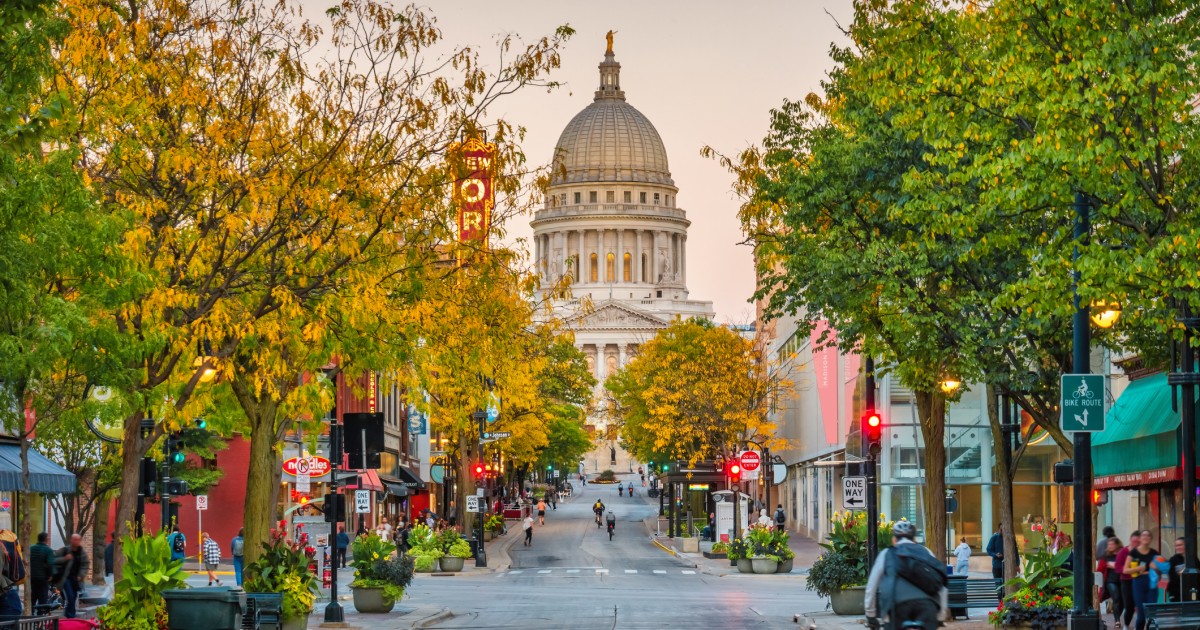 Oct. 27, 2025 – The Wisconsin Legislature returned after a summer hiatus to begin deliberations on legislative matters during the 2025-26 fall floor session. After a limited floor period in September, legislative activity increased throughout October with numerous committee hearings and floor days in both chambers. The fall floor session will conclude in November, with floor periods scheduled between Nov 11 to Nov 20.
Oct. 27, 2025 – The Wisconsin Legislature returned after a summer hiatus to begin deliberations on legislative matters during the 2025-26 fall floor session. After a limited floor period in September, legislative activity increased throughout October with numerous committee hearings and floor days in both chambers. The fall floor session will conclude in November, with floor periods scheduled between Nov 11 to Nov 20.
After the holidays, the legislature will return for the final floor periods of the session scheduled from Jan 13 to Jan 22 and Feb 10 to Feb 19. An additional three floor days are scheduled from Mar 17 to Mar 19, but if the past is any indication, the March floor period might only be used for limited action, or one house might meet for a single day to conclude any outstanding business from the other chamber.
State Bar Issues on Criminal Justice Staffing and Court Fee Increases Proposed
Governor Tony Evers and legislative leaders reached a
budget compromise in early July that included 43 new assistant district attorney (ADA) positions and 12.5 support positions for State Public Defenders. While these positions helped address a growing need in these important criminal justice agencies, legislators have indicated that more needs to be done. Rep. David Steffen (R-Howard) and Sen. Eric Wimberger (R-Oconto), along with others, introduced Assembly Bill 514 and Senate Bill 546, which they called the “Justice for All Act.”
The drafted legislation provides position authority for 30.5 assistant district attorneys (ADAs), 13.0 assistant state public defenders (ASPDs), 23.0 State Public Defender (SPD) support staff, and 2.0 circuit court judges (and a corresponding 2.0 court reporters) in 2027-28, and 64.5 ADAs, 22.0 ASPDs, 41.0 SPD support staff, and 4.0 circuit court judges (and a corresponding 4.0 court reporters) in 2028-29. The bill adds four circuit court branches in Brown County (August 1, 2027), in Menominee and Shawano County (August 1, 2027), in Brown County (August 1, 2028) and in Kenosha County (August 1, 2028). It should be noted that funding for the new positions would need to be requested in their respective agency budget requests for the 2027-29 biennial budget. The State Bar supports the position increases and will advocate for fully funding the positions.
 Cale Battles, is the government relations program manager with the State Bar of Wisconsin. He can be reached by
email, or by phone at (608) 250-6077.
Cale Battles, is the government relations program manager with the State Bar of Wisconsin. He can be reached by
email, or by phone at (608) 250-6077.
Additionally, legislation to increase court fees received a public hearing in the Assembly Judiciary Committee in late September.
Assembly Bill 320 and
Senate Bill 333 proposed by Rep. Scott Allen (R-Waukesha) and Sen. Van Wanggaard (R-Racine) would apply an inflationary increase to every statutory court fee based on the last time the fee was adjusted. The State Bar testified against the proposal in committee due to access to justice concerns for individuals and the impact of the higher fees on participants seeking justice during times of significant emotional or financial distress. A subsequent amendment was filed that would direct fees back into the court system. The State Bar continues to monitor and review the legislation.
Exoneree Compensation Considered
Recently, a bipartisan group of legislators circulated a legislative co-sponsorship memo that would update the claims limit for individuals that were wrongly convicted and imprisoned. The last time these amounts were updated was in 1980. The current limits have a cap of $5,000 per year with a maximum compensation of $25,000. This process is done through the Wisconsin Claims Board. Currently the only option to receive more than the maximum of $25,000 is to have the full legislature authorize a larger amount.
The legislative proposal, similar to previously introduced legislation, would increase not only the yearly amounts to $50,000 but also the maximum amount to $1 million. The proposal would also create a transition plan for the exoneree and provide for health care. The State Bar Board of Governors believes that government must ensure that exonerees are appropriately compensated for the injustice they suffered and the years of freedom they lost, including both financial compensation and social support services.”
For questions or more information on pending legislation please feel free to contact State Bar Government Relations Coordinators, Lynne Davis (ldavis@wisbar.org) or Cale Battles (cbattles@wisbar.org). For grassroots advocacy questions please contact Devin Martin (dmartin@wisbar.org).
What You Can Do: State Bar of Wisconsin Advocacy Network

State Bar members are encouraged to send a message to their lawmakers expressing support on legislative topics which positively affect the legal system using the
Advocacy Network. Pre-written email messages are editable to suit your own thoughts and opinions and help to demonstrate the breadth of support for policies that prioritize access to justice. You can also "Choose Your Own" to craft messages to any of your elected officials, from President of the United States down to your local municipal officials.
Don't forget to
subscribe to the Rotunda Report newsletter and follow us
on X to stay informed and get involved in the legislative process.
